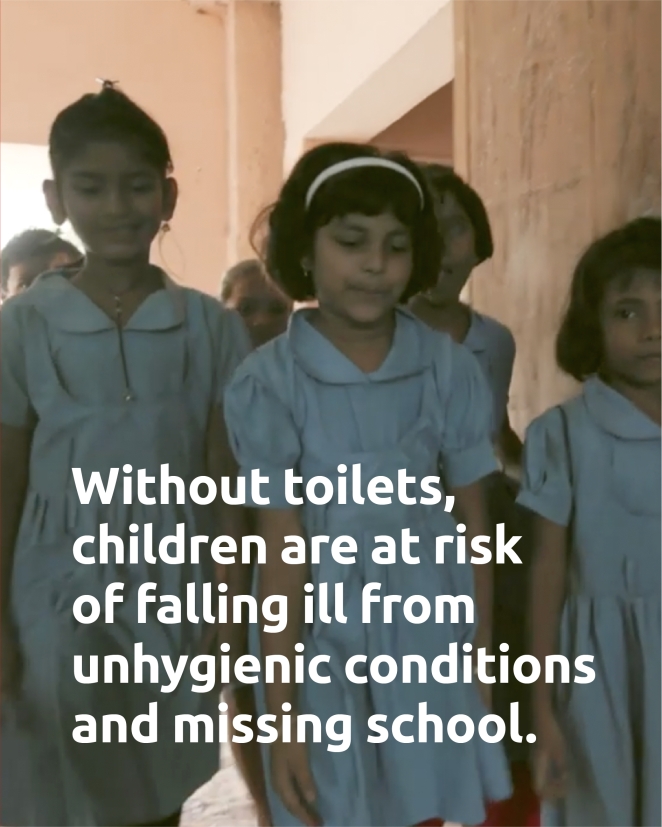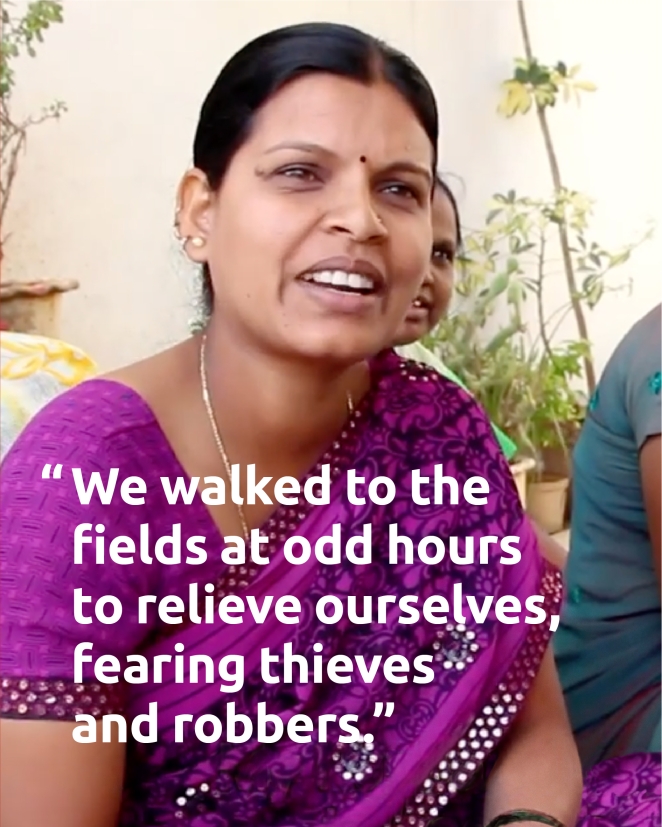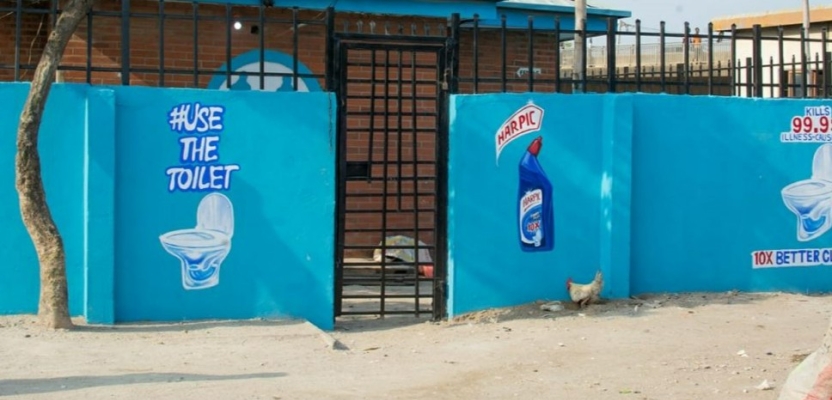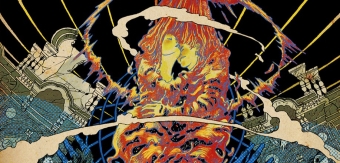Ever wondered what life would be without a toilet? 1 in 4 people around the world lack access to one. In fact, more than 10% of our global population must defecate in the open, and globally, 55% of people do not have access to safely managed sanitation.
This is particularly an issue for women and girls who especially vulnerable – spending around 266 million hours every day finding a safe place to relieve themselves.
This World Toilet Day (19th November), global cleaning brand Harpic is raising awareness – and partnering with Water.org (co-founded by Matt Damon) to help provide access to improved sanitation for families in need (primarily in India). A range of individual human stories will be going live across Reckitt’s platform to present a side otherwise unseen.
We caught up with Harpic’s global brand leader Ally Cane to explore the value of partnerships, the role of brands in educating and supporting local communities, and of course the story and journey of Harpic.

Can you tell us more about World Toilet Day?
World Toilet Day is marked every year on the 19th of November and aims to raise awareness of the global sanitation crisis. The statistics are quite shocking – one in four people around the world don’t have access to a toilet, and 3.6 billion people don’t have access to safely managed sanitation. Can you imagine not being able to use your toilet for a day!
You don’t have to go very far to put yourself in their shoes, and a lot of them are only children. The thought of my godchild not being able to go to the toilet during the school day is incomprehensible, so why should it be acceptable anywhere in the world? But it goes even further than toilets. When some people in a community don’t have access to a toilet, everyone’s health is threatened. Poor sanitation can contaminate drinking-water sources, rivers, and food crops, spreading deadly diseases among the wider population and has a bigger impact by restricting improvements in gender equality, education, economies, and the environment.
Part of the United Nation’s Sustainability Development goals is to ensure safe toilets for all by 2030 – and right now we’re seriously off track. So, raising awareness and donating anything you can makes a really big difference.
And that’s where Harpic can help. Driven by our mission to ‘elevate toilet and bathroom hygiene for better health’, we are partnering with our global partner www.water.org to help provide access to improved sanitation for families in need.
Do you feel that brands have a responsibility to support and educate?

Absolutely, and that goes for smaller brands and big corporates. Local projects are just as important as global initiatives. There’s so much talk about purposeful brands and what this really means. Essentially, it’s having your own vision of the world and actively doing as much as you can to make this a reality. Our vision, as part of the Reckitt family, is to create a cleaner and safer world – which has only heightened since the pandemic. Cleaning now plays a much larger role in how people feel safe.
At Harpic specifically, our brand line is ‘the clean that makes the difference’. There are two levels to this. There’s the physical meaning of it, which refers to us creating products that are safe and effective. Education around the products feeds into this too, and it’s our responsibility that everyone knows how to use our products properly and the importance of using them.
But this line also alludes to Harpic’s wider vision. It’s about making sure that people feel safe, and that they have access to good sanitation wherever they are. This is where our partnership with Water.org comes in.
Can you tell us about some of the work Harpic has been doing with its global partners in recent years to highlight the issue of sanitation?

This is a long-term partnership with Water.org but each year we’ve tried to highlight a different element of the wider issue. This year, we’ve been working on our ‘stories unseen’ campaign, which is all about making the invisible visible. These are real stories that were uncovered through Water.org, demonstrating the impact of their work. In telling these stories alongside the facts, we have given the statistics a human face. People resonate with people.
But with such personal stories comes a lot of responsibility to depict them with empathy. While it’s important to raise awareness, it’s more important to protect these people. So, there was strict guidance around the wording that we used – making sure that any facts we quoted matched those used by Water.org.
Many of our offices have been doing a lot of work locally too, addressing sanitation more widely from Brazil to Bangladesh, Nigeria to India. For example, last year we launched a campaign with French schools, creating posters that educate children on how to keep the toilet clean and safe.
Can you talk us through the creative elements behind the ‘stories unseen’ campaign? What influences fuelled this?

The core assets for the campaign combined clear graphics with relevant photographs to support the individual stories. Each personal experience is supported by facts and the empathetic tone of voice, highlighting how people can help make a difference. We kept the social assets editable so that each of our markets can add to the stories and deploy locally.
These have been made to use on Instagram, Twitter, Facebook, and LinkedIn. The campaign also includes individual posters using clear languages and visuals to encourage awareness and education in schools towards best cleanliness practice and behaviour change.
Did you learn anything new during the project?

There’s been some shocking facts that have blown my mind. For example, figures from the World Health Organisation show that ‘more people have access to a mobile phone than a toilet’.
It’s these kinds of insights along with seeing the dedication and passion of everyone at Water.org that makes working with our partners so rewarding. It’s a chance to actively use our expertise and influence for something larger than the brand and that’s what’s encouraged us to go as far as we can.
What do you hope this partnership and ‘stories unseen’ campaign achieves for the brand?

First and foremost, I hope it shines a light on the sanitation crisis and the incredible work being done by Water.org. If on World Toilet Day, everyone stopped for just a moment to imagine what life without a toilet would be like and then donated, that would be amazing. For us as a brand, that means that we’ll have moved a step closer to achieving our vision of making a difference.
Credit list for the work?
I would like to give a shout out to everyone that worked hard to get this year’s campaign out there - the Global Harpic Brand Team but especially Abhineet Khanka in our Indian Gurgaon office, as well as Erin Prock from Water.Org and our agency partner Design Bridge Amsterdam, particularly Daniel Leckenby and Jennifer Rodrigues.






